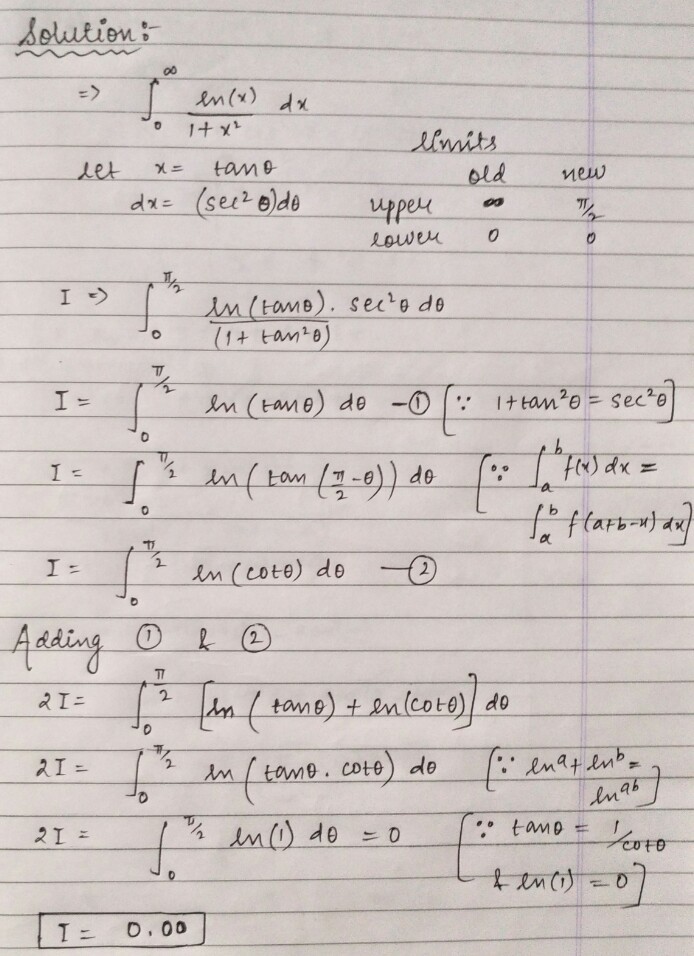An Easy but Interesting Integral
∫ 0 ∞ 1 + x 2 ln ( x ) d x
Find the value of the integral above to 2 decimal places.
The answer is 0.00.
This section requires Javascript.
You are seeing this because something didn't load right. We suggest you, (a) try
refreshing the page, (b) enabling javascript if it is disabled on your browser and,
finally, (c)
loading the
non-javascript version of this page
. We're sorry about the hassle.
5 solutions
Thanks for posting solution.
This integral can be solved by 2 methods,
1) Put
x
=
t
a
n
t
.
2) Put
x
=
t
1
. . . I want you to try this method too :-)
Bahut badiya. Beautiful solution and handwriting sir!
Relevant wiki: Integration Tricks
I = ∫ 0 ∞ 1 + x 2 ln x d x = 2 1 ∫ 0 ∞ 1 + x 2 ln x + x 2 ( 1 + x 2 1 ) ln x 1 d x = 2 1 ∫ 0 ∞ 1 + x 2 ln x − x 2 + 1 ln x d x = 0 Using inversions: ∫ 0 ∞ f ( x ) d x = ∫ 0 ∞ x 2 f ( x 1 ) d x
Brilliant Soln Sir
substitue x = tan u , d x = sec 2 u d u , u is from 0 to 2 π
∫ 0 2 π sec 2 u ln tan u sec 2 u d u = ∫ 0 2 π ln tan u d u = ∫ 0 2 π ln sin u d u − ∫ 0 2 π ln cos u d u = 0 (notice the graph sin and cos)
put x=tant and then we will get integration of ln of tant from 0 to pi/2 put t=pi/2-p and we will get integral of ln cot p from 0 to pi/2 replace p by 2 and add two integrals we will get integration of ln 1 which is zero

Set y = x 1 . So
I = ∫ 0 ∞ 1 + x 2 l n ( x ) d x = ∫ ∞ 0 1 + ( y 1 ) 2 l n y 1 y 2 − 1 d y , which implies that
I = ∫ ∞ 0 1 + y 2 l n ( y ) d y = − I , because the limits are switched.
Therefore I = 0 .